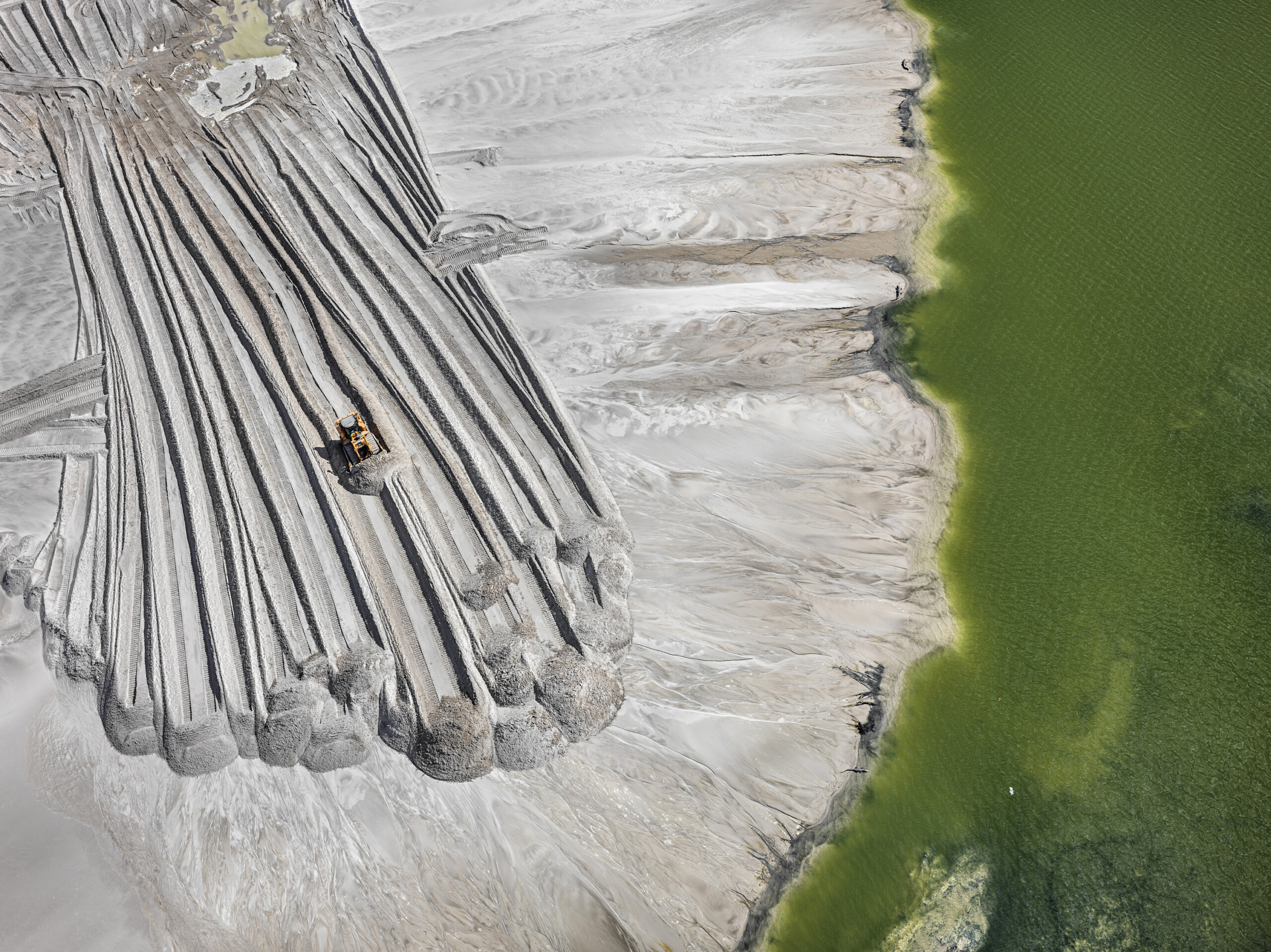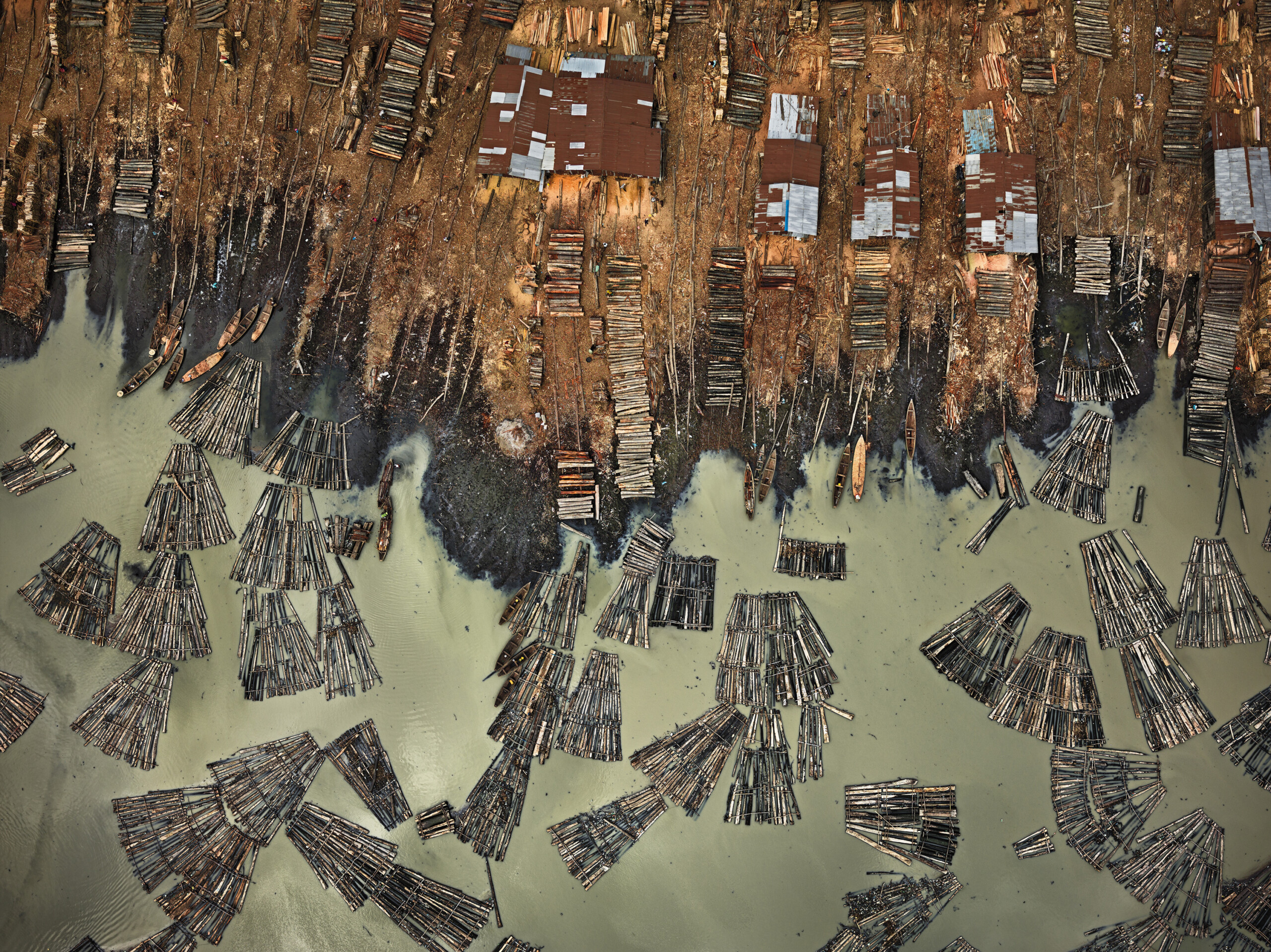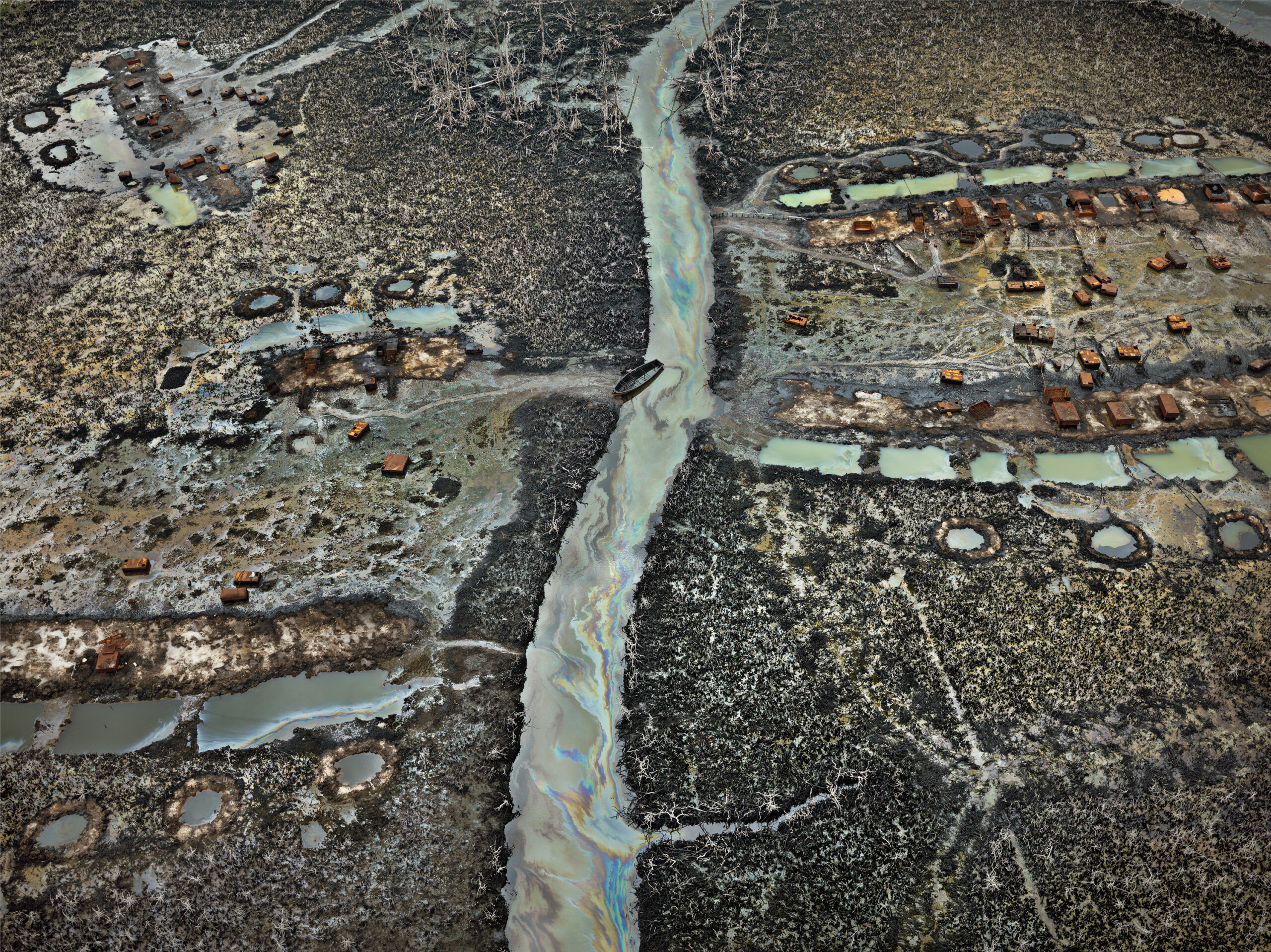The Deformation of the Earth
The Anthropocene Project

Phosphor Tailings Pond #4
Near Lakeland, Florida, USA 2012
Edward Burtynsky
Since the early 1980s, Canadian-born photographer Edward Burtynsky has been capturing the drama, but also the beauty of industrial scenes around the world — mines, factories, quarries, dams, oil drilling sites, landfills; making him an early chronicler of what would later be dubbed the Anthropocene age, a geological epoch designating man’s indelible effect on Earth. Always taken from an aerial perspective and capturing sweeping scenarios, the photographs are often disturbing in their scope, but always eerily fascinating.
His work has evolved into an ongoing, powerful commentary on our relentless exploitation of resources; our impact on Mother Earth. I’m using art to reveal. Every picture speaks about either the material that’s been redeployed, like in cities or buildings, or where it originates or is being converted from — the factories. Indeed: for all they expose, Burtysnky’s pictures are a dispassionate look into the inner workings of mankind, a species that has used — as Burtynsky has said — the earth’s bounty as if it were coming from a bottomless cupboard.
The photographer’s beginnings were less about environmental concerns than aesthetics. Burtynsky started as a painter, only later turning to photography because it was quicker. By 1981 I had started shooting mines, never thinking of them as a subject, he says. It was a kind of curiosity. The early-1980s image on the back cover of his 2017 book, Essential Elements, was originally a take on Abstract Expressionism, à la Jackson Pollock’s drip paintings. I was using landscapes to find a form that I wanted to work with. I kept trying to home in on how a painter would look at the blank canvas and say, how do I fill in via my piece of 4×5 film?
Burtynsky’s biography informs his fascination with manufacture and expansion. Losing his father as a teenager, he worked as a miner and at the Ford and General Motors factories in his native St. Catherine’s, Ontario. In the 1960s the area near Toronto was akin to a Canadian Detroit.
Although drones are now easily available, the photographer still shoots primarily from helicopters, hovering no higher than about 200 meters above the ground to ensure that details remain recognisable. He executes each image from a carefully considered concept: the opposite approach from, say, a photojournalist capturing a moment. Burtynsky, who is in his early 60s, has produced photographic series on oil and water as elements and has more recently explored the ongoing turbo-expansion in China. But his newest work, The Anthropocene Project, a multidisciplinary project in collaboration with documentary filmmaker Jennifer Baichwal and cinematographer Nicholas de Pencier, focuses on man’s indelible marks on the planet in the greater sense. It includes Burtynsky’s dramatic portraits of extraction and other incursions (some on view here) recorded on every continent save Antarctica.
Burtynsky’s camera manages to connect us to a world we have become disconnected from: the world that feeds our desires, that underpins everything we live in, with, from, about, and on. The viewer is left with the images’ toxic beauty.

Saw Mills #1
Lagos, Nigeria 2016

Oil Bunkering #1
Niger Delta, Nigeria 2016
Please select an offer and read the Complete Article Issue No 5 Subscriptions
Already Customer? Please login.
